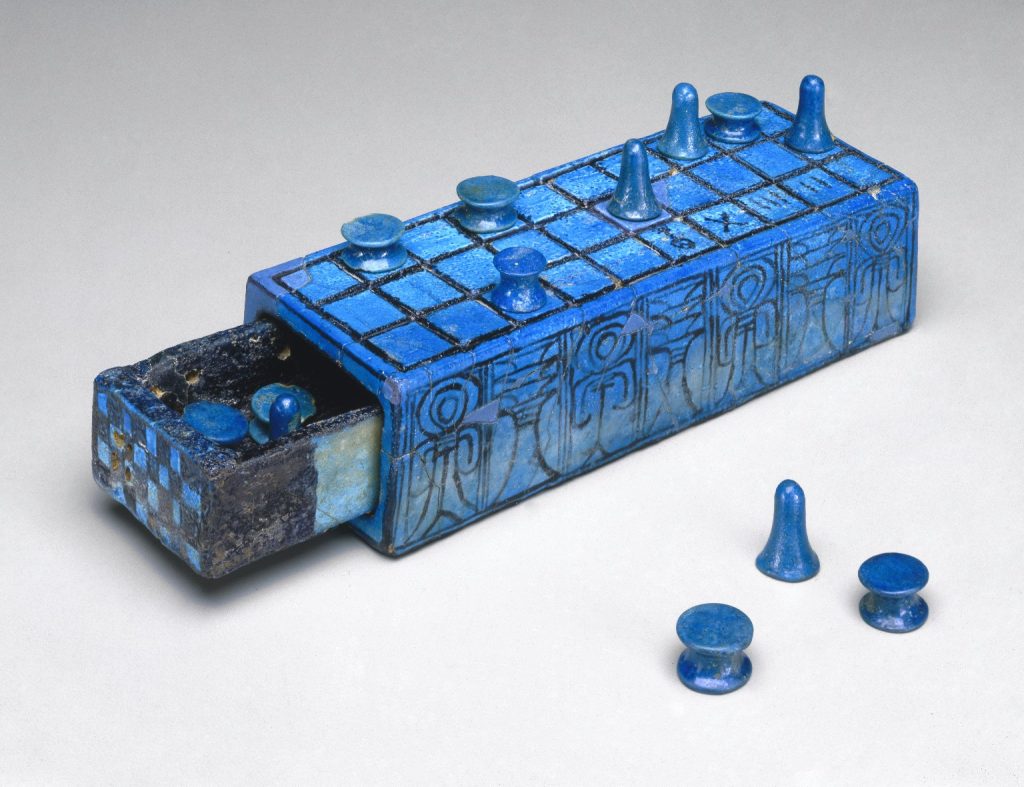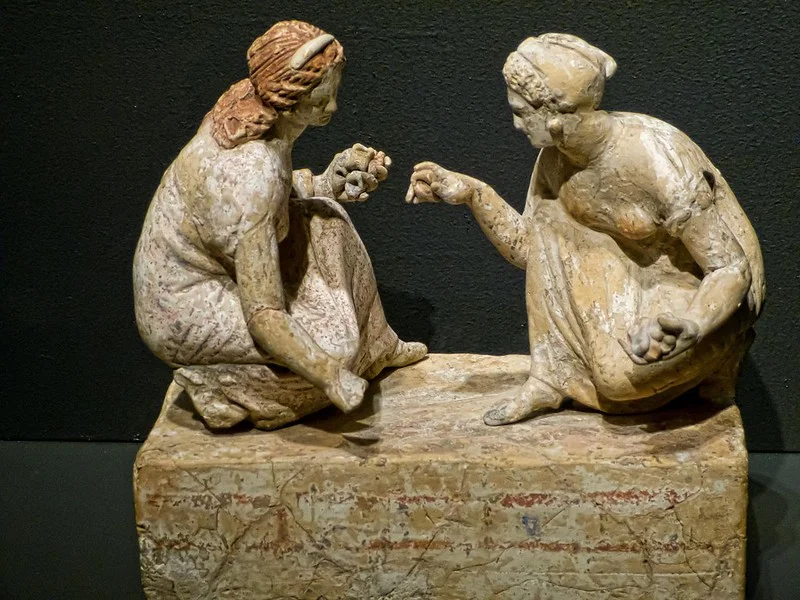Gambling, a pastime as old as civilization itself, has been a part of human culture for thousands of years. While the concept of money as we know it today did not always exist, ancient people found other valuable items to wager.
Gambling in Ancient Egypt was more than a pastime; it was an integral part of their culture, religion, and society. From mythological origins to legal regulations, these practices have left a lasting impression, shaping not only their civilization but also influencing modern gaming culture.
Gambling’s Religious Beginnings in Ancient Egypt
Remarkably, the origins of gambling in Ancient Egypt are tied to their religious beliefs. A myth involving the gods Nut and Geb, against the will of the supreme god Ra, sets the stage. In this tale, Nut was forbidden from conceiving for 360 days.

However, through a clever game called Senet, devised by the god of love, knowledge, and wisdom, Teuta of Illyria, Nut could circumvent this curse. The game, involving bets with Khonsu, the god of the moon, added five days to the calendar, allowing Nut to give birth to other gods.
This myth not only underscores the religious significance of gambling but also its impact on the Egyptian calendar.
Ritualistic Gambling Practices
In Ancient Egypt, gambling was not just a leisure activity but also had ritualistic importance. Ritualists often threw stones or sticks, interpreting the outcome (even or odd) as positive or negative omens. This practice was particularly prevalent during prayers for divine assistance, reflecting a belief in immediate responses from the gods.
Archaeological Evidence of Gambling Objects
The prevalence of gambling in Ancient Egypt is further supported by archaeological findings. Dice made from elephant tusks discovered in Thebes and a game resembling checkers attest to the widespread nature of gambling. Another game, HUBEM-how, involved throwing discs into a bowl in a specific order, highlighting the complexity and sophistication of these ancient games.
Ancient “Gambling” Games

1. Astragali (Knucklebones) – Ancient Greece and Rome
The game of Astragali, widely played in ancient Greece and Rome, involved the knucklebones of sheep or goats. Each side of the bone had a different value, and players would bet on the outcome of the throw. While it’s uncertain exactly what they gambled with, it’s likely that early forms of currency, goods, or services were at stake.
2. Senet – Ancient Egypt
Senet, dating back to around 3000 BC in Egypt, evolved from a simple board game to one with religious significance. There is evidence suggesting that it involved elements of gambling, possibly with early forms of currency or valuable goods like grain or livestock.
3. Tabula – Ancient Rome
Tabula, an ancestor of modern backgammon, was a popular game in ancient Rome. Players moved pieces around a board based on dice rolls, and gambling was a common aspect. Romans might have bet with coins, property titles, or other valuables.
4. Patolli – Ancient Mesoamerica
The Mesoamerican game Patolli was more than just a game for the Aztecs; it was a major gambling activity. Evidence suggests they bet gold, precious stones, and sometimes personal belongings or their freedom. The stakes were high, indicating the game’s importance in their society.
5. Liubo – Ancient China
Liubo was a board game in ancient China often associated with gambling. Players used sticks similar to dice, and historical records suggest that they bet with coins, jade pieces, and other valuable items.
6. Duodecim Scripta – Ancient Rome
Another popular Roman board game, Duodecim Scripta, involved a board with 36 letters. Players would bet on the outcome of dice rolls to move their pieces across the board. Roman currency, personal belongings, and property might have been at stake.
Legal Regulations on Gambling
Interestingly, ancient papyri dating from 3000 to 4000 BC contain laws aimed at controlling gambling, suggesting its rampant nature in society. The severe consequences for excessive gambling, such as forced labor in quarries, indicate the extent of the problem and the measures taken to curb it.
Evolution of Gambling in Egypt
Over time, gambling in Egypt evolved from dice games to card games in the medieval era, influenced by European and Asian cultures. Additionally, lotteries, common in ancient civilizations, gained popularity in Egypt around the fifteenth century, each with its unique cultural significance.
Legacy in Modern Gaming
Today, the rich history and culture of ancient Egypt continue to influence modern gaming, particularly in online slots. Games themed around Egyptian gods, rulers, and symbols like pyramids and scarabs are immensely popular, showcasing the enduring legacy of Ancient Egypt in the world of gambling.
The mythology of ancient Egypt, with its pantheon of gods and elaborate stories, offers a wealth of narrative possibilities for game developers. Games often explore themes of adventure, treasure hunting, and divine intervention, weaving stories around figures like Ra, Anubis, and Cleopatra. This narrative depth not only enriches gameplay but also keeps players engaged with compelling storylines that echo the epic myths of old.
While traditional Egyptian-themed games continue to be popular, there is also a trend towards innovation and evolution within the genre. Developers are experimenting with new mechanics, such as interactive storylines and multiplayer features, to keep the theme fresh and engaging. These innovations ensure that the legacy of ancient Egypt remains relevant in the rapidly evolving landscape of modern gaming.